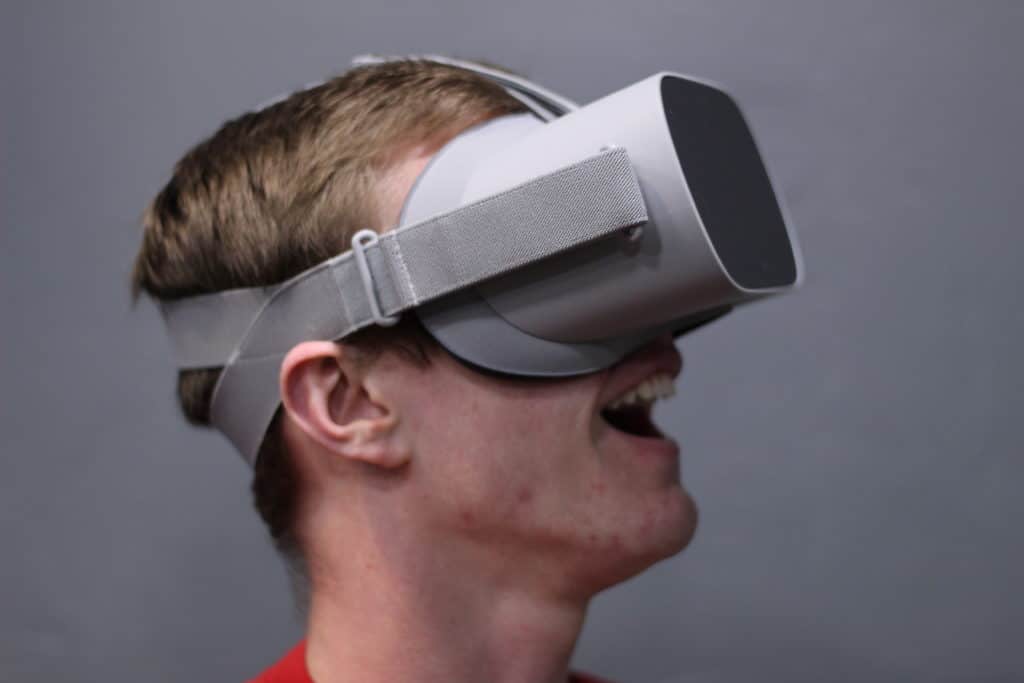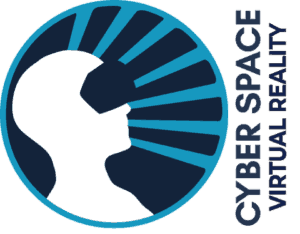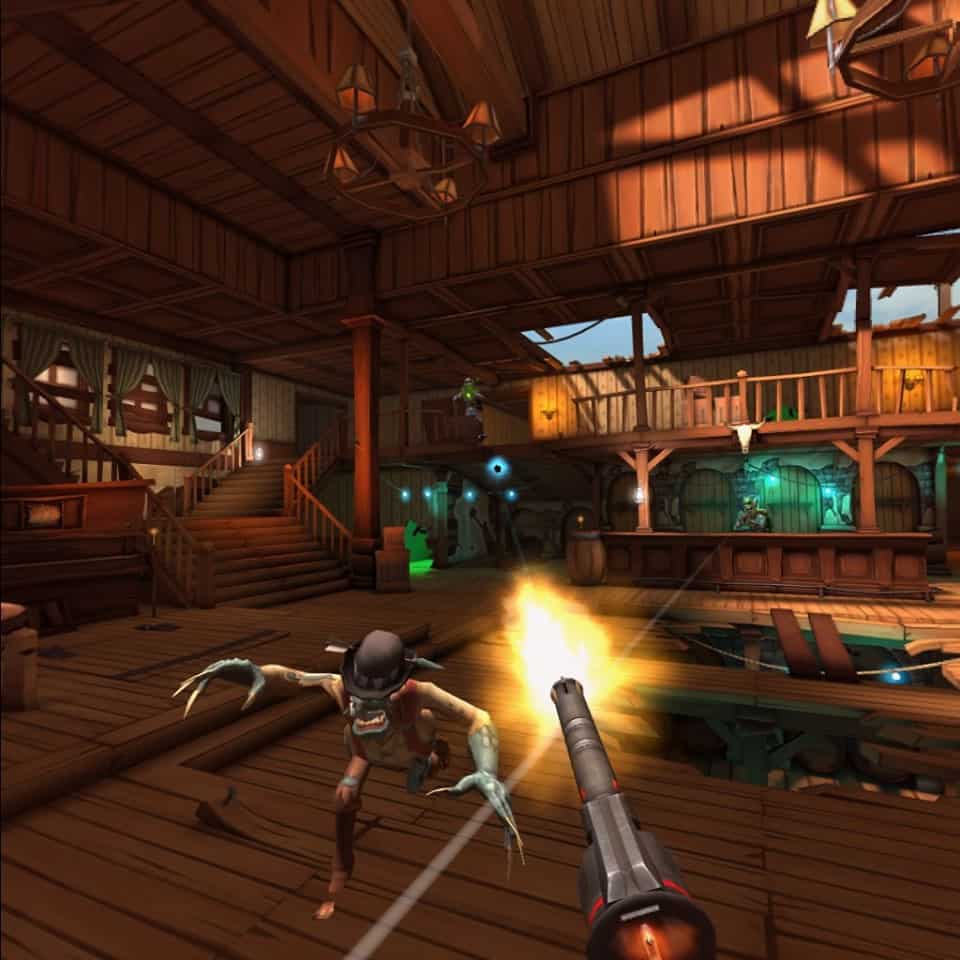With the rise of virtual reality many people are wondering if the experience is still possible with one eye. Whether you are just curious or only have one eye, I have the answer!
Virtual reality works almost the same with one eye as it does with two. In fact, without the second eye, the human brain is actually easier to trick into believing the false distance in virtual reality. With two eyes the human brain has depth perception that is tricked using lenses on a headset.
There is a lot to this, and I want to dive into why having one eye in virtual reality really doesn’t matter all that much. Continue reading to fully understand how it works!
Depth Perception in Virtual Reality

Humans use a lot of different tools to recognize depth, and one of the biggest ones is binocular vision (having two eyes).
This type of depth perception is really useful, but the truth is that we as humans do a really great job of judging distance using other means as well. This is why those with one eye can still function really well.
If you have one eye, then you know what I mean. Even though you do not have this binocular vision does not mean you do not know how far away things are.
If you have two eyes, go ahead and cover one up and you will see that although lessened, your depth perception is not completely lost.
Virtual reality is intended to replace several of your senses in order to mimic reality. If you were deaf, you wouldn’t experience sound in either virtual reality or reality so the experience isn’t lessened. This can be applied to using virtual reality with only one eye.
Even though people with one eye do not have as much depth perception that somebody with both eyes do, their experience will not be diminished because they are not used to it in the first place.
People with one eye still have depth perception, and therefore they will still experience the 3D effect that comes with VR. This means that their virtual experience will still be incredible and mind-blowing.
Virtual Reality vs 3D Movies With One Eye
A 3D movie is different than virtual reality because it relies solely on binocular vision to work. Due to this, virtual reality can still be experienced while the 3D movie experience is not as fun for those with one eye.
The method by which 3D movies do this is really complicated, but to put it simply, they present 2 different images on the screen at the same time that can only be viewed through special glasses.
This requires the glasses to be specially made for each eye, and since the eye can only see through one lens at a time, the effect does not work.
Obviously, this is the case with virtual reality, but since the images are stagnant on the screen, the image will still seem like a flat image.
This is why the virtual reality experience can still be experienced and enjoyed for those with one eye while 3D movies are still not possible.
Our Experience With Virtual Reality and One Eye
I own multiple VR headsets, so I decided to give them a shot with one eye. The experience would obviously be a little different for those who actually have one eye, but this definitely gave me some insight into how the VR experience is affected.
I put on my virtual reality headset and covered up my right eye with a piece of paper. Although at first it seemed diminished, I quickly realized that my brain filled in the gaps. If I really tried to focus on how far away things were, it felt a little strange. As I got busy doing things though, it felt pretty normal. I was able to play all the same games and do fairly well.
The only thing that you really lose when you only have one eye is the field of vision. When you have two eyes, you ignore the middle walls of the headset because you have another eye that can see that section of the HMD. With only one eye you have a pretty small field of view and that can get pretty annoying.
So, I definitely second the motion that virtual reality does work with one eye. There are plenty of people that use VR with only one eye, and they say it is pretty phenomenal. With the accessibility of VR arcades around the world, it can’t hurt to give it a try.
How Virtual Reality Tricks Your Brain Through Your Eyes
Virtual Reality uses a vast number of tools to trick your brain into believing that the objects around you are real. This is what makes the virtual experience so real and incredible.
The first trick is using two different screens for each of your eyes to alter the wearer’s sight. However, if you don’t have two eyes, then there are other methods that still alter perception.
Shadows

A lot of the time, your eyes (or eye) will trust that a shadow cannot be falsified. For example, if you see a car that is far away, the shadow will be far away as well. If you see a matchbox car that is close to your eyeball, then the shadow will also be close, proving that the car is close.
Virtual reality can make the shadows of things the right size, making your eyes believe that it is far away.
This affects those who are seeing virtual reality with one, or two eyes. This makes the experience even more real.
Movement
This is probably the most important part of virtual reality in terms of realism. If can see that you are moving in the virtual world as you move your actual body, it is hard to not believe it! Again, this works for anybody, despite how many eyes you have.
The hardware can sense your movement down to very specific increments, and adjusts your view accordingly. This is truly amazing because it lets the user move freely and look at the virtual world around them.
For example, I can move around the world and see that the objects actually seem to have a designated area, whereas with a 3D Movie the perspective will not change. In VR, if I bend down to look under a desk I can see under it, but with a 3D television, I cannot see underneath no matter where I move unless the perspective in the movie changes.
Movement makes your brain think that the things you are seeing are actual objects, and that is where almost all of the magic comes from.
Interposition (overlap)
This one is simple but very important. When something covers another thing up, you know that it is in front of that thing. This helps people with one eye have the full VR experience because it enhances their depth perception.
This is common sense and something that we do all the time, but we don’t realize we do it because it is so obvious. If a car is covering up your view of a stop sign, then you know that the car is closer to you than the stop sign.
Virtual Reality does this automatically because everything is rendered in a 3D space.
Distance Blur
When things are far away, they get more and more blurry. Someone with one eye might not have as good of depth perception as someone else, so far away blurry objects help a lot. Virtual reality does a great job with using this technique to mimic our reality.
When the edges of things are less sharp, we know that they are further away. This is another obvious one.
Virtual reality does this right off the bat because its pixels are not small enough to show details of things that are very small, therefore things that far away do not show a lot of detail.
There are plenty more ways that we determine distance, but we won’t get into all of them. Really all you need to know is that virtual reality does a great job of replacing all of these things.
All of these tricks still work on people with only one eye, and that is why virtual reality still has the same 3D effect on them.

